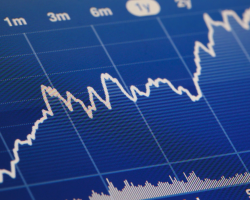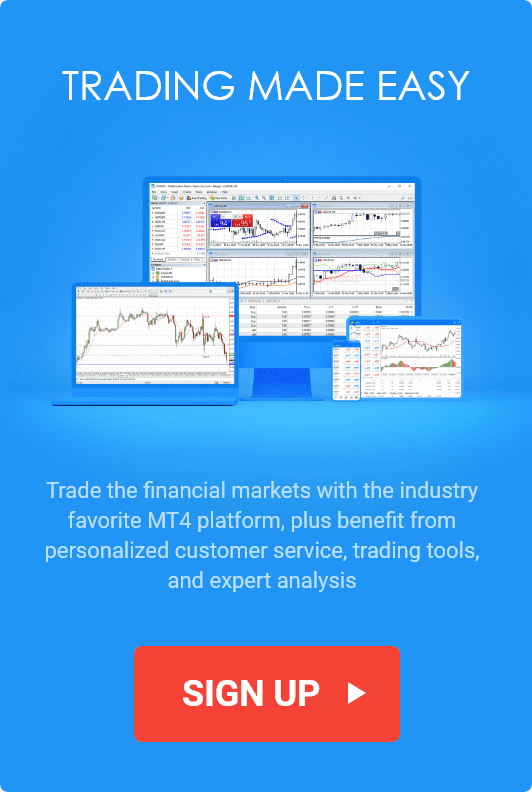Information Overload and Its Impact on Trading Decisions

Imagine trying to navigate a stormy sea with hundreds of navigational tools, each giving conflicting signals. This is the reality many traders face in today’s fast-paced markets. The sheer volume of real-time news, technical charts, and market data can easily overwhelm even seasoned professionals.
In the world of trading, this phenomenon is known as information overload - a state where too much data clouds judgment and hampers trading decision-making. Left unmanaged, it can disrupt the trading process and result in missed opportunities or costly mistakes. Understanding and addressing this challenge is vital for any trader aiming to optimize their performance and stay ahead in volatile markets.
What Is Information Overload in Trading?
Information overload refers to the state of being overwhelmed by an excessive amount of data, leading to difficulties in processing and decision-making. In trading, this phenomenon is amplified due to the sheer volume of market data available in real-time.
Traders must contend with multiple streams of information, including news feeds, technical charts, algorithmic signals, and social media updates. This abundance of data, while valuable, can make trading decision-making more challenging. Instead of focusing on actionable insights, traders may find themselves paralyzed by analysis or prone to impulsive actions based on incomplete understanding.
The rise of algorithmic trading and sophisticated analytics tools has further contributed to this challenge. While these tools provide critical insights, their overuse can lead to excessive reliance on data, making it harder to separate useful data from noise. Understanding what is information overload in trading and developing strategies to manage it effectively is essential for maintaining clarity and improving trading outcomes.
Also read: The Reality of Successful Trading: Forget About the Palm Tree Fantasy
The Psychological Impact of Information Overload
In the high-stakes world of trading, information overload takes a heavy psychological toll on traders. The unending stream of market data, from real-time news and economic reports to technical charts and social media buzz, often triggers stress, mental fatigue, and analysis paralysis. This cognitive strain can severely impair a trader’s ability to evaluate opportunities and act decisively, leading to costly mistakes or missed opportunities.
For example, decision fatigue - a state where the brain struggles to make choices after prolonged analysis - often causes traders to resort to impulsive actions, such as hastily entering or exiting trades. On the flip side, excessive deliberation caused by analysis paralysis can result in traders missing critical windows to act, especially in fast-moving markets.
Overwhelmed by conflicting signals from charts or economic data, traders may also experience heightened anxiety, further clouding their judgment. Studies have shown that elevated stress levels can disrupt logical thinking, pushing traders toward emotional decisions driven by fear or greed rather than strategy.
Effectively managing this psychological burden involves adopting disciplined strategies to filter data and prioritize only what’s essential. Simplifying workflows, limiting exposure to redundant data, and incorporating mindfulness practices can help traders maintain focus and reduce cognitive strain, leading to more consistent results.
The Role of Information Overload in Poor Trading Decisions
Information overload is a leading cause of poor trading outcomes. When traders face an avalanche of data - charts, news feeds, and market alerts - they risk making errors like overtrading, misinterpreting market trends, or hesitating on crucial opportunities.
Overtrading is one of the most prevalent consequences of information overload. When bombarded with conflicting indicators, traders may see non-existent patterns or act prematurely, leading to excessive transaction costs and diluted returns. For instance, reacting to minor fluctuations without a clear strategy often causes traders to enter unnecessary positions that do more harm than good.
Another major risk is the misinterpretation of trends. With too much data at hand, traders might overweight irrelevant metrics while ignoring critical ones. For example, during a market rally, focusing solely on short-term price action could blind a trader to broader fundamental trends driving the movement.
Statistics reveal that traders exposed to excessive data miss opportunities 30% more often than their peers, as they become distracted by noise rather than actionable insights. A practical example is a trader fixated on small-cap stock performance while missing larger, market-moving announcements like interest rate changes.
The solution lies in trading process optimization - using tools and strategies to streamline data and focus only on high-value inputs. This ensures traders are better positioned to make well-informed, timely decisions, reducing the likelihood of costly errors.
Also read: The Risks and Consequences of Trading Forex Without a Strategy: Why a Plan is Essential for Success
How to Manage Information Overload in Trading
In today’s fast-paced trading environment, managing information overload in trading is crucial for making sound decisions and maintaining profitability. The constant influx of data from charts, economic updates, and news feeds can overwhelm traders, leading to poor trading decision-making. Implementing effective strategies to reduce data noise in trading and focus on actionable insights can transform your trading process.
Focus on Essential Data Sources
One of the most effective ways to manage information overload in trading is by narrowing your attention to a few high-quality data sources. Instead of following every market update, identify the data that directly impacts your trades. For example:
- For forex traders, focus on economic calendars and central bank announcements.
- Stock traders can prioritize earnings reports and sector-specific news.
By limiting your inputs to these core sources, you can minimize distractions and ensure the data you analyze is both relevant and actionable.
Use Automation Tools and Filters
Automation tools play a critical role in simplifying the trading process. Tools such as alerts, AI-driven analysis, and algorithmic scanners can automatically filter out unnecessary noise and bring critical insights to your attention. For instance:
- Set alerts for significant price movements or key economic events.
- Use trading platforms that provide custom dashboards to visualize only essential metrics.
Adopt a Structured Trading Plan
Having a well-defined trading strategy can help you navigate the sea of information effectively. A structured plan defines your entry and exit points, risk tolerance, and criteria for making decisions. By sticking to your plan, you reduce the likelihood of being swayed by irrelevant data.
For example, a forex trader might decide to base trades on major currency pairs during specific market hours, while ignoring minor pairs or market noise. Similarly, using Stop Loss orders ensures you don’t overreact to short-term fluctuations.
Incorporating these strategies not only reduces cognitive strain but also ensures your trading decisions are rooted in logic rather than emotion.
Tools and Techniques to Streamline Trading Information
Modern trading platforms offer traders various tools designed to simplify the analysis and management of data. Utilizing these tools effectively can reduce information overload and enhance the trading process by allowing traders to focus on actionable insights instead of sifting through endless streams of data.
Trading Dashboards
Customizable trading dashboards are among the most practical tools for managing trading data. These dashboards consolidate critical data such as price charts, news updates, and trading performance metrics into one centralized interface. This not only saves time but also enhances efficiency by eliminating the need to toggle between multiple screens.
For example, platforms like MetaTrader and TradingView allow traders to customize their dashboards to include only the most relevant data. This feature is particularly useful for traders who follow multiple assets, as they can focus on the performance metrics and news updates that directly impact their trades.
Moreover, some dashboards integrate advanced analytics tools, providing insights such as volatility trends or potential price breakout zones. By visualizing this data, traders can make more informed decisions without feeling overwhelmed by unnecessary information.
News Aggregators
Market news plays a significant role in driving price movements, but the sheer volume of news can be daunting. News aggregators like Bloomberg and Reuters help traders filter and prioritize news updates that matter most. These tools use algorithms to curate content, ensuring that only high-impact stories relevant to specific markets or assets reach the trader.
AI-Driven Analytics
Artificial intelligence (AI) has revolutionized the way traders analyze data. AI-powered tools can process vast amounts of information, identify patterns, and deliver actionable insights in real time. For instance, machine learning algorithms can predict price movements based on historical data combined with current market conditions.
Platforms equipped with AI analyze indicators like moving averages, volume, and sentiment to provide recommendations. These tools are especially useful in reducing the cognitive load on traders, as they eliminate the need to manually analyze every indicator. By doing so, traders can focus on executing their strategies rather than interpreting complex data.
Economic Calendars
An economic calendar is indispensable for tracking key market-moving events like GDP reports, employment data, and interest rate decisions. Tools like Forex Factory and AdroFx provide highly customizable economic calendars, allowing traders to focus on events relevant to their strategies.
For example, a trader following the forex market might filter the calendar to display only high-impact events related to specific currency pairs. This approach helps traders avoid distractions from less significant events while preparing for potential market volatility caused by critical announcements.
Sentiment Analysis Tools
Market sentiment - whether traders are collectively bullish or bearish - can influence price trends significantly. Sentiment analysis tools analyze data from news articles, social media, and trading platforms to gauge overall market sentiment.
For instance, during a period of high market volatility, sentiment tools might indicate whether the market's bearish outlook is intensifying or stabilizing. This information can help traders make decisions that align with the broader market mood.
By incorporating these tools into their workflow, traders can streamline their data analysis, prioritize actionable information, and optimize their trading strategies effectively.
Also read: Dip Buying Mastery: A Strategic Approach to Capitalizing on Market Dynamics
The Balance Between Data and Intuition in Trading
Trading is as much an art as it is a science. While data-driven decisions are critical, ignoring intuition altogether can limit a trader’s potential. Striking a balance between data and intuition in trading can lead to more nuanced and effective decision-making.
The Role of Data in Trading
Data provides the foundation for rational trading decisions. Historical trends, technical indicators, and economic reports offer tangible insights into market behavior. However, an over-reliance on data can sometimes paralyze traders, especially when conflicting signals arise.
The Value of Intuition
Intuition, often developed through experience, enables traders to read between the lines. For example, a seasoned trader might notice subtle shifts in market behavior that technical indicators fail to capture. Intuition often complements data by filling gaps in analysis, especially during uncertain or rapidly changing conditions.
Combining Data and Intuition
Balancing these elements involves using data as a starting point while allowing room for gut instincts to guide nuanced decisions. Here’s how: Use data to identify trade opportunities but trust your intuition when deciding how much capital to allocate. When indicators show mixed signals, lean on your experience to interpret market sentiment. This balanced approach not only enhances trading decisions but also builds confidence, reducing the stress associated with information overload.
Conclusion
In today’s data-driven markets, information overload is a significant challenge that can hinder a trader’s performance. However, by implementing effective strategies to simplify the trading process - such as focusing on essential data, leveraging automation tools, and adopting a structured plan - you can mitigate its impact.
Additionally, modern tools like trading dashboards, news aggregators, and AI-driven analytics offer powerful solutions to filter out unnecessary noise. Balancing these data-driven insights with intuition further enhances your decision-making process, ensuring you stay adaptable in any market condition.
Ultimately, successful trading is about focus and discipline. By adopting these strategies and tools, you'll not only improve your immediate trading decisions but also build a sustainable approach that positions you for long-term profitability in any market condition.
Ready to optimize your trading workflows? Explore resources and tools on AdroFx to streamline your workflow and enhance your trading experience.
About AdroFx
Established in 2018, AdroFx is known for its high technology and its ability to deliver high-quality brokerage services in more than 200 countries around the world. AdroFx makes every effort to keep its customers satisfied and to meet all the trading needs of any trader. With the five types of trading accounts, we have all it takes to fit any traders` needs and styles. The company provides access to 115+ trading instruments, including currencies, metals, stocks, and cryptocurrencies, which make it possible to make the most out of trading on the financial markets. Considering all the above, AdroFx is the perfect variant for anyone who doesn't settle for less than the best.









